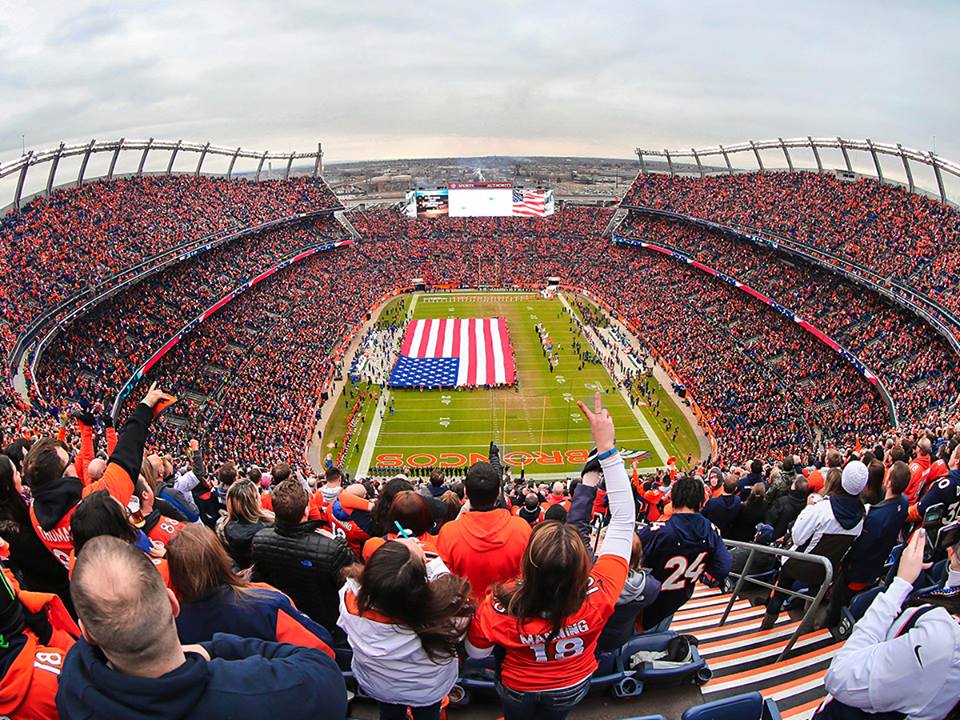
With the Denver Broncos on the market for potentially $4 billion, new owners may look at major changes to Empower Field at Mile High–but they should contemplate a new stadium.
With a price tag of $4 billion, there will be a lot of pressure for the new Broncos owners–whoever that ever ends up being–to unlock assets for the NFL team. The most obvious way to do this is on the facilities front. Now, Empower Field at Mile High is only 21 years ago–middle-aged by NFL standards–and it was built in the era when NFL stadiums were still fairly basic facilities. Take a look at the next generation of NFL facilities–U.S. Bank Stadium, SoFi Stadium, Allegiant Stadium–and they offer up a whole lot more than just an NFL game-day experience. We’re talking concerts, we’re talking year-round events, we’re looking at gathering both small and large. We have seen a serious rethinking of what makes an NFL stadium work on a financial stadium.
So the notion of Empower Field at Mile High renovations makes some sense, adding higher-end amenities like clubs and specialized experiences. And that’s the advice the Broncos are receiving from some folks working to land a consulting gig, per the Denver Post:
Given the facility’s age, it’s more likely for the next Broncos owner to explore potential upgrades to Empower Field over building an entirely new stadium, said Marc Ganis, a sports consultant who has worked with a host of NFL teams.
That could include evaluating the stadium’s infrastructure, taking stock of amenities fans may expect and ensuring the team facilities remains first-class.
“It depends on how good the bones are,” Ganis said. “If those are all good, a major renovation is more likely than a new stadium for at least the next 15 years or so.”
This is such small thinking, however. Upgrades will boost revenues only so much–you can only add so many clubs and high-end amenities to a basic stadium before you realize you’re already most of the way to a new stadium.
Indeed, the big thinking may mean moving right past the notion of renovations and moving to the big picture. An NFL is an asset that can be leveraged way past game-day operations and serve as the ground floor of development. Sports teams, bluntly, are real-estate developers these days. In baseball, mixed-used developments based on the sports facility as a draw is rapidly coming the norm. We’ve see the Atlanta Braves successfully leverage new and old ballparks to spur local development impacting their bottom lines. In Denver, the owners of the Colorado Rockies have been on a development spree in LoDo, buying existing properties and developing their own projects next to Coors Field. The area surrounding U.S. Bank Stadium in downtown Minneapolis, once a sea of surface lots and low-slung warehouses, is now a vibrant neighborhood with housing, restaurants, the arts and more. The Green Bay Packers leveraged renovations to Lambeau Field–which basically meant building a new stadium surrounding the old 1950s bowl–and created a larger development that features housing, restaurants and office space marketed to tech firms and more. The Chicago Bears, famously, are looking at a major mixed-use development in Arlington Heights to leverage team assets.
For the new Broncos owners, this is a chance to think big. Yes, a renovation would be the safest short-term bet in pumping revenues. But for the highest return on investment while leveraging a very unique asset, the team really should be looking at a new facility that would make a much more significant impact on both the team and Denver residents.
Image courtesy Denver Broncos.
